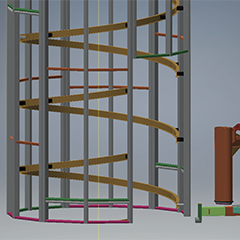The wind market is continuously evolving to bigger and more powerful WTGs, both onshore and offshore, each one has its limitations, but they need to include new solutions and continue to reduce the associated LCoE. Until now, the onshore market has represented approximately 70% of the total MW installed (GWEC), but offshore is growing.
Onshore WTGs are evolving from 2-3 MW to 5-6MW platforms, but will be close to 8MW and more in the years to come.
Each wind farm placement will determine the best configuration of the WTGs and the associated tower with the existing technology. However, the logistical requirements of the whole process will determine the feasibility of the final options.
Low wind sites require higher towers, forest and plains, on the other hand, higher towers bring a homogeneous flow that is better for the WTG component lifecycle and reduces O&M costs. Anyway, extra height supposes extra yearly MWh production.
High wind sites usually are on top of mountains with no easy access, where WTGs <2MW were installed. Gusty wind reduces the lifetime of the WTG components. Now a lot of the first wind farms are waiting to be repowered, but due to logistical restrictions, the new WTGs cannot be placed on these sites.
Offshore WTGs are growing from 8MW to 12-15MW and the next developments are focused on 20MW
Offshore wind market providers are usually close to ports to avoid logistical limitations due to the massive size of components, this is the reason for the difference from the onshore market. The offshore market is divided into fixed and floating, where the O&M of WTGs will be decisive for the final LCoE.
The increasing component size of both markets means there is a need to explore new solutions. These need to be more competitive, keeping in mind an affordable production, reducing the associated carbon footprint of renewables. The only way to reach new limits is to use modular components.
WunderOcean is focused on developing renewables software to optimize the location of the offshore wind farms (LOOP Wind), offshore commercial projects and working on Self-erecting Towers (SeT), in collaboration with The University of Coimbra. A Portuguese grant towards the IDT program, which is a patented system that uses standardized modular components to fulfil the new requirements of WTGs.



























